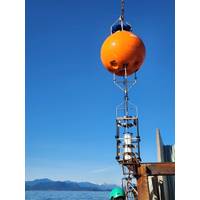
ASL Concludes Metocean Survey for Canada’s Gas Transmission System
in March 2024.All subsea equipment and wave buoy mooring anchors were successfully recovered, with full recovery of all datasets. The field program measured directional waves and subsea currents at six individual moorings deployed at three strategic locations along the pipeline route in the Strait of Georgia near Powell River, BC and Texada Island.These measurements utilized ASL’s new PBM-15 polyethylene deepwater buoys to support data collection in water depth of up to 400 m.The datasets collected from this program will be used in numerical modeling studies to support pipeline spanning and
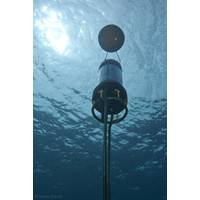
Teledyne Benthos Acoustic Modems Aid in Innovasea Fish Tracking
(OTN)—an aquatic research platform that connects universities, businesses, not-for-profit organizations, and governments to track animal movements on a global scale. The OTN’s Pacific Ocean acoustic receiver arrays in the Queen Charlotte Strait, Juan de Fuca Strait, and the Northern Strait of Georgia span from Vancouver Island to the mainland, provide an integrated series of regional gates to document the coastal movements of acoustically tagged juvenile salmon migrating to sea, adult salmon returning from the sea to rivers in the region to spawn, and other coastal species’ movements
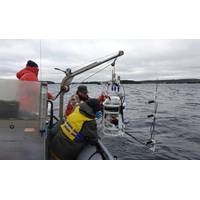
Dalhousie University: Quiet Oceans Speak Volumes During Lockdown
measurable reductions in low-frequency sounds near major shipping routes between Canada and the U.S. Between January and April of this year, a hydrophone west of Vancouver Island recorded a 16% (1.5 decibels) decrease in noise power compared to the same time last year. And, in the usually busy Strait of Georgia, Barclay noticed that not only is the ocean getting quieter, but at a faster rate, too.The full effects of a quieter ocean are unknown, but they may lead to healthier marine mammal populations. “Free from the distraction and stress we cause, hunting would become easier, mating more convenient
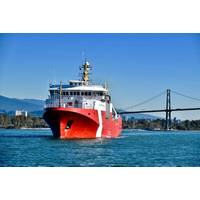
Seaspan-Built CCG Ship Heads for Sea Trials
, specific attention is also given during Sea Trials to the extensive array of ship sensors that are embedded in the ship’s Drop Keel and to the quietness with which the ship’s engines perform at cruising and at fishing speeds and when in idle.Sea Trials will be largely conducted in the Strait of Georgia as part of a continuous 15-day exercise. Upon completion of Sea Trials, the ship will be moored at Ogden Point on Vancouver Island to prepare the vessel for Delivery to the Canadian Coast Guard, which is scheduled for later this year
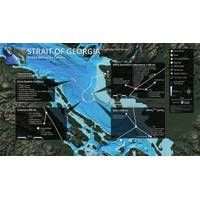
Observatory Upgrade for Ocean Networks Canada
OceanWorks International said it will provide an upgrade to the Strait of Georgia Shore Station for Ocean Networks Canada (ONC). Its scope consists of design, supply, installation and system integration testing of the upgraded system. The new system will provide the customer with the ability to monitor and control the power system in the Shore Station with a state of the art control system. New functionality will allow remote access and include soft start capabilities to enhance the safe use of the equipment. The upgraded shore station will also now share commonality with other shore stations

Port Monitors Impact of Ship Noise on Whales
activities on whales throughout the southern coast of British Columbia, a hydrophone listening station has been deployed by the Port Metro Vancouver, with support from the University of Victoria’s Ocean Networks Canada and JASCO Applied Sciences, to monitor underwater vessel noise in the Strait of Georgia. The hydrophone listening station deployment and monitoring activities are part of the Enhancing Cetacean Habitat and Observation (ECHO) Program, which aims to find ways to reduce impacts that shipping may have on at-risk whales in the region. The intention is to develop and
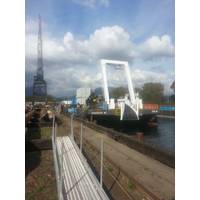
Aquatic to Lay Subsea Power Cables off Canada
in British Columbia, Canada. The contract will see Aquatic deliver a multi-reel solution, making the operation faster and supporting its partners to manage costs and resources, the company said. The shallow water project will commence later this week in the tidal estuary of the Strait of Georgia. Aquatic will lay approximately 15 kilometers of 87 millimeter diameter electrical power cable, and will be operating in a busy shipping lane between Vancouver Island and mainland British Columbia, close to the U.S. border. Aquatic said its multi-reel solution enables the project
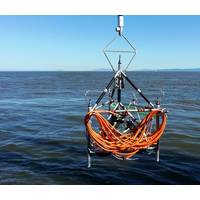
AMAR Mission to VENUS
mode the AMAR achieves great operating longevity—more than a full year of sound recording is possible on one set of batteries—thanks to its very low power consumption and large memory. JASCO’s AMARs have been deployed at two locations on the VENUS Ocean Observatory in the Strait of Georgia. The primary purpose of this mission is to demonstrate the multi-sensor data collection and streaming capability of the AMAR. Of specific interest to scientists are the real-time detection, identification and localization of calls from individual Southern Resident Killer Whales, and the measurement
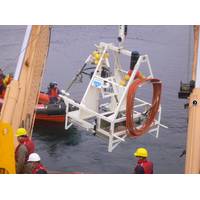
Undersea Laboratory Cable Array Repaired
OceanWorks International announce the successful re-deployment of the VENUS coastal network in the Strait of Georgia after repairs. Placed in Canadian waters in the Strait of Georgia, VENUS is part of the Ocean Networks Canada Observatory, is a cabled undersea laboratory with nodes that provide live video, acoustic images and real-time data for ocean researchers and explorers. VENUS delivers real time information from seafloor instruments via fiber optic cables to the University of Victoria, BC. In response to the failure of a power connector on the VENUS array in early fall 2012, a joint team of


 February 2025
February 2025





